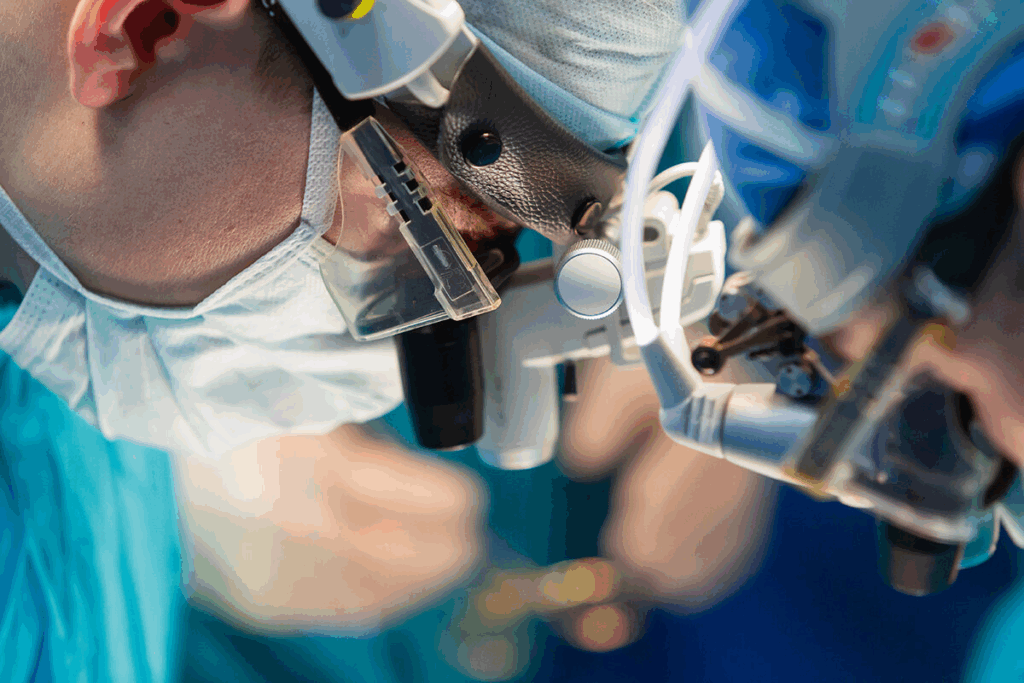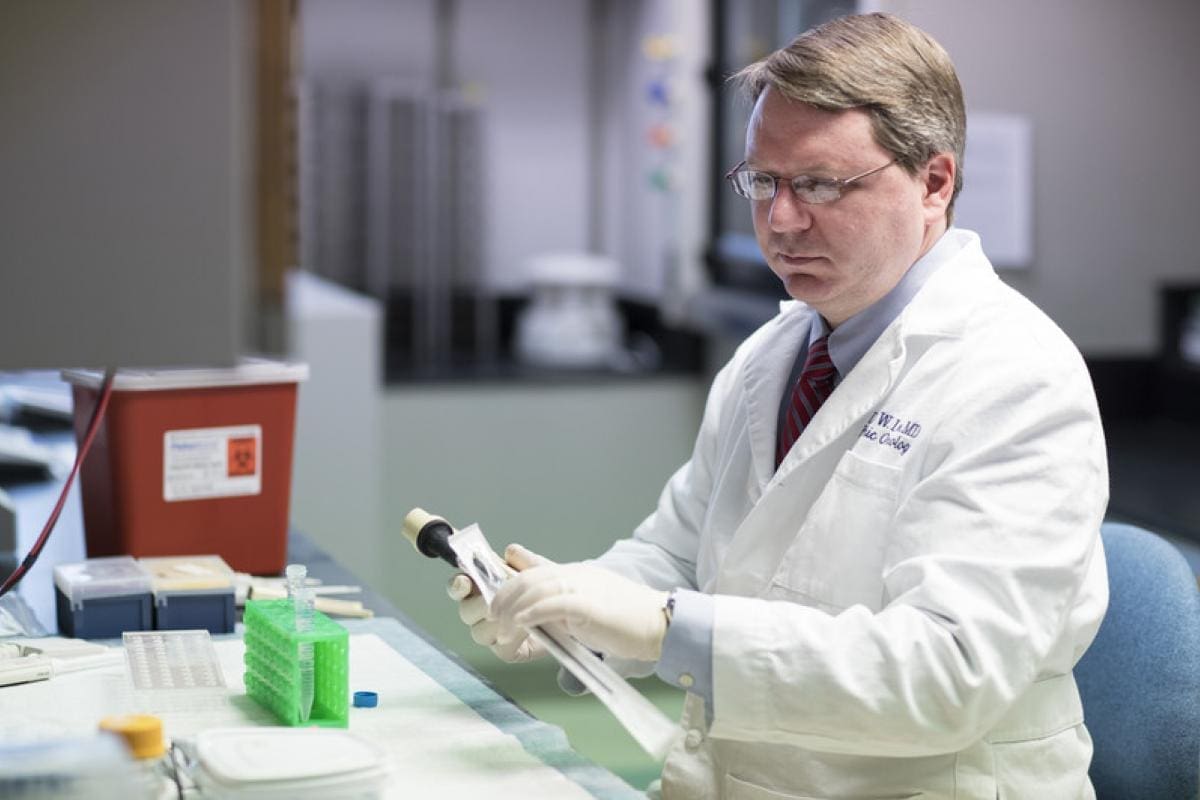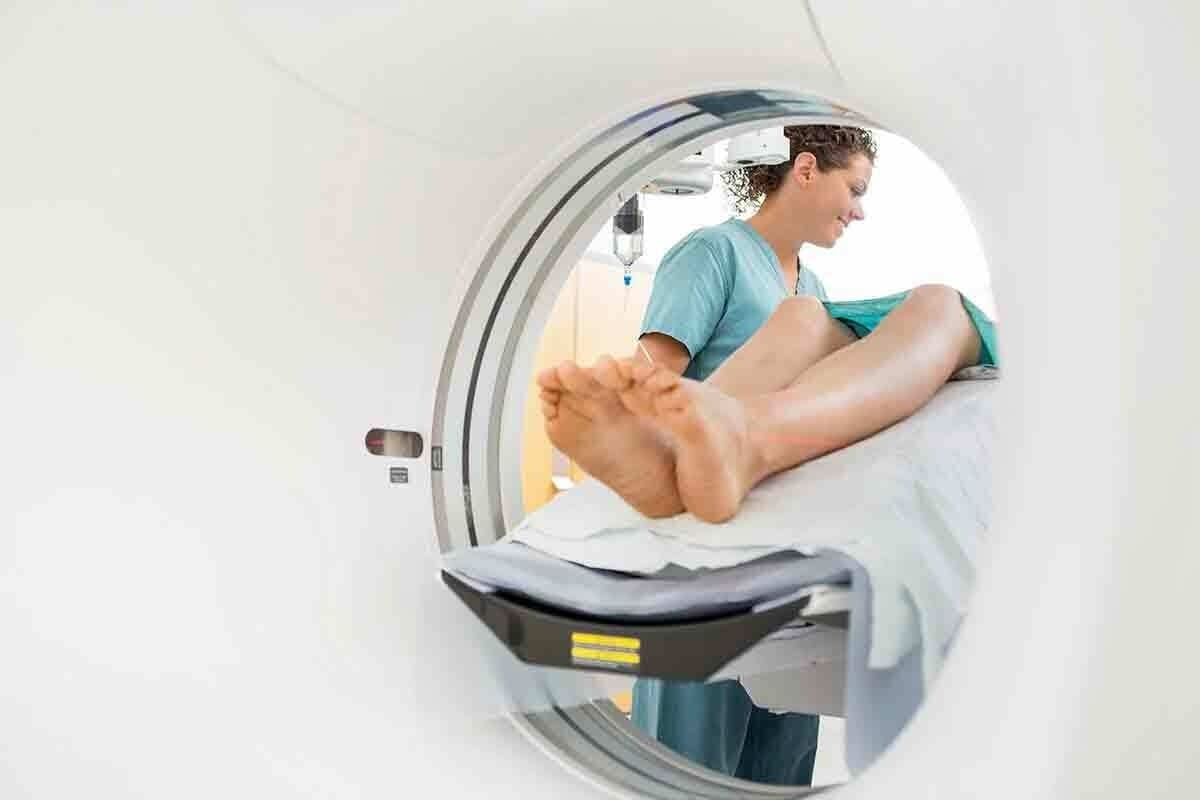Last Updated on November 26, 2025 by Bilal Hasdemir

When a blocked bile duct or liver duct happens, quick stent placement can save lives. It brings back important liver function. At Liv Hospital, we provide top-notch care and focus on our patients in liver and biliary treatments.
We use minimally invasive procedures like ERCP to put in stents. These stents help by keeping bile flowing from the liver to the bowel. This helps with problems like cholangitis and strictures caused by cancer, giving patients relief and better results.
It’s key for patients with liver and biliary issues to know about bile stents and the procedures. Our team works together to give full care and support.
Key Takeaways
- Blocked bile ducts can be managed with stent placement.
- ERCP is a common procedure for placing liver stents.
- Bile stents restore bile flow, addressing conditions like cholangitis.
- Minimally invasive procedures reduce recovery time.
- Liv Hospital offers patient-centered care for liver and biliary treatments.
What Are Bile Stents and How Do They Work?

Bile stents are important for keeping bile flowing. They work in the biliary system, which is key for digestion. This system includes the liver, gallbladder, and bile ducts.
The Anatomy of the Biliary System
The liver makes bile, a fluid needed for fat digestion and vitamin absorption. The gallbladder stores bile, and the bile ducts carry it to the small intestine. There, it helps with digestion.
But, bile ducts can get blocked. This can happen due to gallstones, tumors, or inflammation. When blocked, bile flow stops, causing jaundice, itching, and digestive issues.
Mechanism of Action: Restoring Bile Flow
Bile stents keep bile ducts open to restore bile flow. They are placed during ERCP or PTBD procedures. This ensures bile flows into the intestine, easing symptoms of bile duct blockage.
Stents physically keep the bile ducts open. This restores bile flow and lowers biliary system pressure. Elevated pressure can happen when bile ducts are blocked.
Knowing how bile stents work helps patients and doctors. It shows their vital role in liver and bile duct health.
Key Fact #1: Types of Bile Stents Used in Clinical Practice
Managing bile duct blockages depends on the stent type used. There are mainly two types: plastic and metal stents. The choice depends on the patient’s condition and the blockage’s nature.
Plastic Bile Stents
Plastic stents, or polyethylene stents, are often used. They come in different sizes and are cheaper than metal stents. They are easy to remove and replace but can clog up with sludge and bacteria.
Metal Bile Stents
Metal stents are durable and less likely to clog. They can be uncovered or covered. Uncovered stents risk tumor growth, while covered ones prevent it. Metal stents are pricier but last longer, making them better for cancer cases.
Selection Criteria for Different Stent Types
Choosing a stent depends on the blockage cause, patient’s life expectancy, and risk of clogging. Plastic stents are for benign strictures or temporary needs. Metal stents are for cancer cases because they last longer.
In conclusion, knowing about bile stents is key to managing blockages. By picking the right stent for each patient, we can improve outcomes and quality of life.
Key Fact #2: Medical Conditions Requiring Bile Stent Placement
Bile stents are key in treating both benign and malignant biliary disorders. They help remove obstructions in the bile duct. This is due to many medical conditions.
Benign Biliary Conditions
Benign biliary conditions are non-cancerous and affect the bile ducts. Choledocholithiasis, where gallstones block the common bile duct, is common. It can cause obstruction and jaundice. Bile stents ensure bile flows freely.
Other benign conditions include biliary strictures and papillary stenosis. These are narrowings of the bile ducts and the ampulla of Vater, respectively. Bile stent placement keeps the bile duct open.
Malignant Biliary Obstruction
Malignant biliary obstruction happens when cancer blocks the bile ducts. This often occurs in patients with pancreatic cancer or cholangiocarcinoma. Bile stents are vital in restoring bile flow and easing symptoms like jaundice and pruritus.
A study on PMC shows the importance of biliary stenting in palliative care for these patients.
Post-Surgical Complications
Post-surgical complications, like bile duct injuries or strictures, may require bile stent placement. These can happen after cholecystectomy or liver transplantation. Bile stents aid in healing and maintaining bile flow.
In summary, bile stent placement is a versatile treatment for many conditions. It helps manage benign biliary disorders, malignant obstructions, and post-surgical complications. Understanding the reasons for bile duct stent placement helps healthcare providers manage these conditions effectively.
Key Fact #3: Procedures for Bile Stent Placement
Placing bile stents is a complex task that has improved a lot over time. We use two main methods: Endoscopic Retrograde Cholangiopancreatography (ERCP) and Percutaneous Transhepatic Biliary Drainage (PTBD).
Endoscopic Retrograde Cholangiopancreatography (ERCP)
ERCP combines endoscopy and fluoroscopy to treat bile and pancreatic duct issues. We start by putting an endoscope down the mouth to the duodenum. Then, we inject contrast material into the bile ducts to see the blockage.
After that, we place a stent to open up the bile flow. A study in the PMC journal shows ERCP with stenting greatly helps with biliary obstructions
“ERCP has changed how we manage biliary disorders, making it a less invasive option than surgery,” say experts.
Percutaneous Transhepatic Biliary Drainage (PTBD)
PTBD is key when ERCP can’t be done. It involves going through the skin and liver to reach the bile ducts. We use a needle and fluoroscopy to guide a catheter into the bile duct to drain it.
Then, we place a stent to keep the bile duct open. PTBD is great for patients with specific anatomy or when ERCP fails.
Imaging Guidance and Technical Considerations
Both ERCP and PTBD rely heavily on imaging. We use fluoroscopy and other tools to see the bile ducts and place the stent right. Choosing the right stent type, size, and placement is key for good results.
The skill of the operator and the quality of imaging are very important for success. As we keep improving in interventional radiology and endoscopy, bile stent placement is getting better for patients. “The future of biliary stenting is in new stent technology and standardizing procedures,” says recent research.
Key Fact #4: Stent in Liver Duct: Specific Applications
Stenting in the liver duct is key for managing biliary obstructions. It helps restore bile flow and ease symptoms in patients with bile duct issues.
Intrahepatic Bile Duct Stenting
Intrahepatic bile duct stenting is a detailed procedure. It involves placing stents within the liver. This method treats strictures or stones that block the flow.
Indications for intrahepatic bile duct stenting include:
- Intrahepatic bile duct strictures
- Intrahepatic stones causing obstruction
- Post-transplant complications
Common Bile Duct (CBD) Stenting
CBD stenting is more common than intrahepatic stenting. It places a stent in the common bile duct. This relieves blockages from stones, tumors, or strictures.
The benefits of CBD stenting include:
- Rapid relief of jaundice and pruritus
- Improved quality of life for patients with malignant obstruction
- Minimally invasive procedure with fewer complications compared to surgery
| Stenting Location | Common Indications | Benefits |
| Intrahepatic Bile Duct | Strictures, stones, post-transplant complications | Relief of obstruction, improved liver function |
| Common Bile Duct (CBD) | Stones, tumors, strictures | Rapid relief of jaundice, improved quality of life |
Special Considerations for Liver Transplant Patients
Liver transplant patients need special care with bile duct stenting. They face higher risks of biliary complications like strictures and leaks.
Key considerations for liver transplant patients include:
- Close monitoring for signs of biliary complications
- Early intervention with stenting or other treatments as needed
- Personalized treatment plans based on the patient’s specific condition and transplant details
We tailor stenting procedures to meet each patient’s unique needs. By focusing on the specific applications of stenting in the liver duct, we offer effective treatments for biliary obstructions.
Key Fact #5: Complications of Bile Stents
Bile stents help manage biliary obstruction but come with risks. Knowing the possible complications helps ensure the best care for patients.
Immediate Procedural Complications
Complications during bile stent placement include bleeding, bile duct perforation, and pancreatitis. These issues often stem from the procedure’s technical aspects. For example, proper technique and patient selection can lower pancreatitis risk after ERCP.
Short-Term Complications
Short-term issues might include infection (cholangitis) or stent malfunction. Cholangitis can happen if the stent blocks or doesn’t drain bile well. Managing these problems might need antibiotics and more procedures.
These short-term issues can affect recovery and quality of life. So, it’s important to closely monitor and follow up after stent placement.
Long-Term Complications
Long-term problems with bile stents include blockage, migration, and sludge or stone formation. Stent blockage can cause jaundice, itching, and serious infections. The risk depends on the stent type and patient factors.
To reduce these risks, we use drug-eluting stents and regular check-ups. Teaching patients about signs of complications is also key for early action.
Key Fact #6: The Forgotten Bile Stent Problem
Forgotten bile stents can cause serious health issues. They are used to help bile flow in patients with blockages. But, if not removed or replaced on time, they can lead to big problems.
Consequences of Retained Stents
Retained bile stents can cause several serious issues. These include stent blockage, infection, and the stent moving out of place. These problems can lead to serious sickness and even life-threatening conditions.
Complications of Retained Bile Stents
| Complication | Description | Consequence |
| Stent Occlusion | Blockage of the stent lumen | Jaundice, Cholangitis |
| Cholangitis | Infection of the biliary tree | Sepsis, Liver Abscess |
| Stent Migration | Movement of the stent from its original position | Biliary Obstruction, Perforation |
Management of Forgotten Stents
Managing forgotten bile stents means removing or replacing them. ERCP is often used for this. Sometimes, more steps like balloon dilation or sphincterotomy are needed.
Prevention Strategies and Patient Tracking Systems
To avoid forgotten bile stents, good patient tracking is key. This includes regular check-ups and keeping accurate records of when stents are placed and removed.
- Implement a stent registry to track stent placement and removal
- Use electronic health records to monitor patient follow-up
- Educate patients about the importance of stent removal or replacement
Palliative Bile Stent Therapy in Advanced Disease
Palliative bile stent therapy is key in managing advanced disease. It improves patients’ quality of life. For those with malignant biliary obstruction, it’s a good option to ease jaundice and other symptoms.
We know patients with advanced disease need all-around care. Palliative bile stent therapy is a big part of this. It helps relieve symptoms that can really affect a patient’s well-being.
Quality of Life Improvements
The main goal of palliative bile stent therapy is to make life better for patients with advanced disease. By fixing bile flow, we can tackle symptoms like jaundice, pruritus, and cholangitis. This makes patients more comfortable and improves their overall well-being.
Key benefits of palliative bile stent therapy include:
- Effective relief from jaundice and associated symptoms
- Improved nutritional status due to restored bile flow
- Reduced risk of cholangitis and other biliary complications
- Enhanced patient comfort and quality of life
Duration of Stent Effectiveness
The time a bile stent works can change based on several things. These include the stent type, the cause of the blockage, and the patient’s health.
| Stent Type | Average Duration of Effectiveness | Common Complications |
| Plastic Stents | 3-6 months | Occlusion, migration |
| Metal Stents | 6-12 months or more | Tumor ingrowth, occlusion |
Multidisciplinary Approach to Palliative Stenting
Managing patients with palliative bile stent therapy needs a team effort. Gastroenterologists, interventional radiologists, surgeons, and palliative care specialists all play a part. They work together to give care that fits each patient’s needs.
By teaming up, we can make treatment better, handle problems well, and offer support. This addresses the complex needs of patients with advanced disease.
Key Fact #7: Innovations in Bile Stent Technology
Medical technology is always evolving, and bile stent design is no exception. New stent technologies aim to improve how we manage biliary obstructions. They focus on better patency rates, fewer complications, and a better life for patients.
Advancements in Stent Design
Recently, drug-eluting bile stents have made a big leap. These stents release drugs to stop tumors from growing or reduce inflammation. They help keep the bile duct open for longer.
Biodegradable stents are another exciting innovation. They dissolve over time, which might cut down on the need for more surgeries. This is great news for those with benign biliary strictures.
Global Bile Stent Market Trends
The global bile stent market is growing fast. This is because more people are getting biliary disorders and new stent tech is coming out. The push is for less invasive procedures and better stent materials.
| Market Segment | Description | Growth Drivers |
| Plastic Stents | Traditional stents used for biliary drainage | Increasing use in benign conditions |
| Metal Stents | Used for both benign and malignant conditions | Advancements in material technology |
| Drug-Eluting Stents | Stents coated with drugs to prevent occlusion | Growing demand for improved patency rates |
The future of bile stent tech looks bright. Ongoing research is exploring new materials and designs. These advancements will likely bring even better care for patients with biliary obstructions.
Impact on Patient Care
These new stent technologies are changing patient care for the better. They’re not just improving how we drain bile; they’re also making patients’ lives better. By cutting down on repeat surgeries and complications, these innovations are greatly improving patient quality of life.
Conclusion: The Future of Bile Stents in Hepatobiliary Medicine
Bile stents are key in treating liver and bile duct problems. They have changed how we manage diseases like cancer and strictures. These stents help keep bile flowing and prevent blockages.
New advancements in stent technology are exciting. We’re seeing stents that release medicine and ones that dissolve on their own. These improvements could mean better care for patients and fewer surgeries needed.
The future of bile stent treatments looks bright. As medical science advances, so will the design and use of these stents. Our goal is to give top-notch care to all patients, from the start of their treatment to long after.
FAQ
What is a bile stent and how does it work?
A bile stent is a small, mesh-like tube. It keeps the bile ducts open. This restores bile flow from the liver to the intestine. It’s placed during a minimally invasive procedure like ERCP.
What are the different types of bile stents available?
There are two main types: plastic stents and metal stents. Plastic stents are cheaper but can clog easily. Metal stents are more durable and less likely to clog.
What conditions require bile stent placement?
Bile stents manage conditions like choledocholithiasis and malignant biliary obstruction. They also help with post-surgical complications. They restore bile flow and ease symptoms.
How is a bile stent placed?
Placement is usually through ERCP or PTBD. ERCP uses a scope through the mouth. PTBD accesses the bile ducts through the skin.
What are the complications associated with bile stents?
Complications include immediate and short-term issues like infection. Long-term problems like stent clogging or migration can also occur.
What is the problem of forgotten bile stents?
Forgotten bile stents can cause clogging, infection, or bowel damage. Regular follow-ups and tracking systems help prevent this.
Can bile stents be used for palliative care?
Yes, bile stents can improve life quality for patients with advanced disease. They alleviate symptoms and enhance bile flow.
What are the latest innovations in bile stent technology?
Recent advancements include drug-eluting stents and biodegradable stents. These aim to improve stent function and reduce complications.
How long do bile stents typically last?
The effectiveness of bile stents varies. Metal stents generally last longer than plastic ones.
Are there special considerations for liver transplant patients with bile stents?
Yes, liver transplant patients need special care with bile stents. The procedure and follow-up must be tailored to their needs.
What is the role of imaging guidance in bile stent placement?
Imaging guidance, like fluoroscopy, is key for safe and effective stent placement. It ensures the stent is placed correctly.
Can bile stents be used to manage benign biliary conditions?
Yes, bile stents can manage benign conditions like choledocholithiasis and benign strictures. They restore bile flow and ease symptoms.
References
- Botaitis, S., & Kouraklis, G. (2020). Biliary stents: The current role in the management of malignant and benign bile duct obstructions. World Journal of Gastrointestinal Surgery, 12(5), 179-196.https://www.ncbi.nlm.nih.gov/pmc/articles/PMC7289532/






